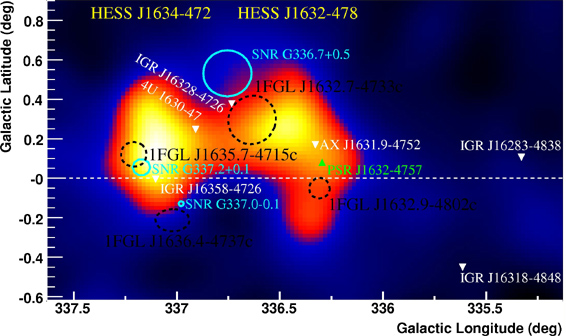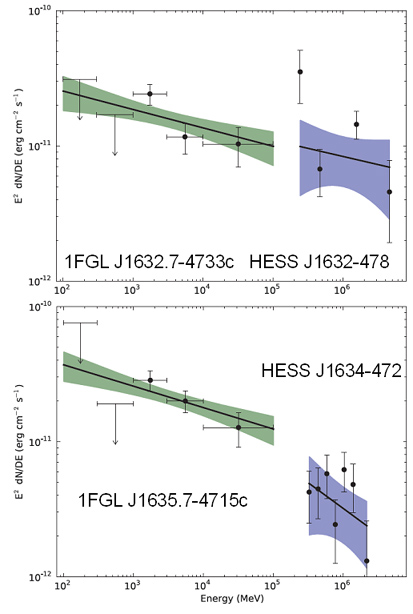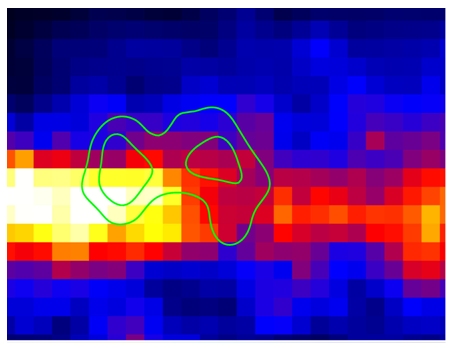Forgotten sources? HESS J1634-472 and HESS J1632-478
February 2010

Most H.E.S.S. gamma-ray sources have been subject to intense follow-up observations in other wavelengths. By comparison, the literature regarding the source complex HESS J1634-472 / HESS J1632-478 (top image) is sparse. Both are extended gamma-ray sources, with a flux of 6% and 12% of the Crab Nebula, respectively, and a significance in the lastest data set of 9.6 and 8.8 sigma. In approximate positional coincidence with each of the sources, a hard X-ray source (IGR) detected by INTEGRAL (Tomsick et al. 2003) is seen, and HESS J1632-478 roughly coincides with an ASCA X-ray source (AX, Sugizaki et al. 2001), believed to represent an X-ray binary. The supernova remnant G337.2+0.1 coincides with HESS J1634-472 but is too small to account for the gamma-ray emission. The pulsar PSR J1632-4757, with a spin-down loss of 5 10^34 ergs/s and a distance of 7 kpc, is marginal as a power source for HESS J1632-478.
Discussion of this source complex is revived by the detection nearby hard-spectrum Fermi LAT sources (Fermi LAT 1-year Point Source Catalog), two of which (1FGL J1635.7-4715c and 1FGL J1632.7-4733c) are located near the centroids of the H.E.S.S. sources, another one (1FGL J1632.9-4802c) coincides with a faint tail of the gamma ray emission of HESS J1632-478, indicating that the complex may be composed of more than just two objects. Within errors, the Fermi and H.E.S.S. spectra join rather smoothly (Fig. 1). The plausible association with the Fermi sources does not immediately shed light on the nature of the sources. Given the positional coincidence of 1FGL J1635.7-4715c with the remnant G337.2+0.1 and the fact the CO data (Dame et al. 2001, see also here) indicate a concentration of molecular clouds near the source (Fig. 2), one might speculate that protons escaping from the remnant illuminate the clouds. However, the estimated distance of 14 kpc of the remnant (Combi et al. 2005, 2006) make this association somewhat unlikely. Deeper X-ray observations may be able to shed light on the nature of these sources.
Reference: The H.E.S.S. survey of the Inner Galaxy in very high-energy gamma-rays, H.E.S.S. collaboration, F. Aharonian et al., Astrophysical Journal 636 (2006) 777-797

